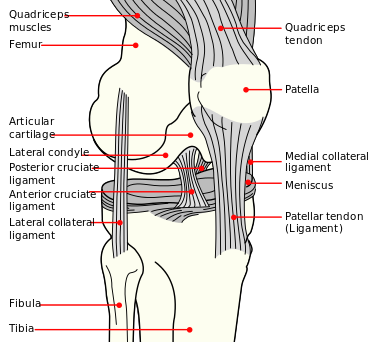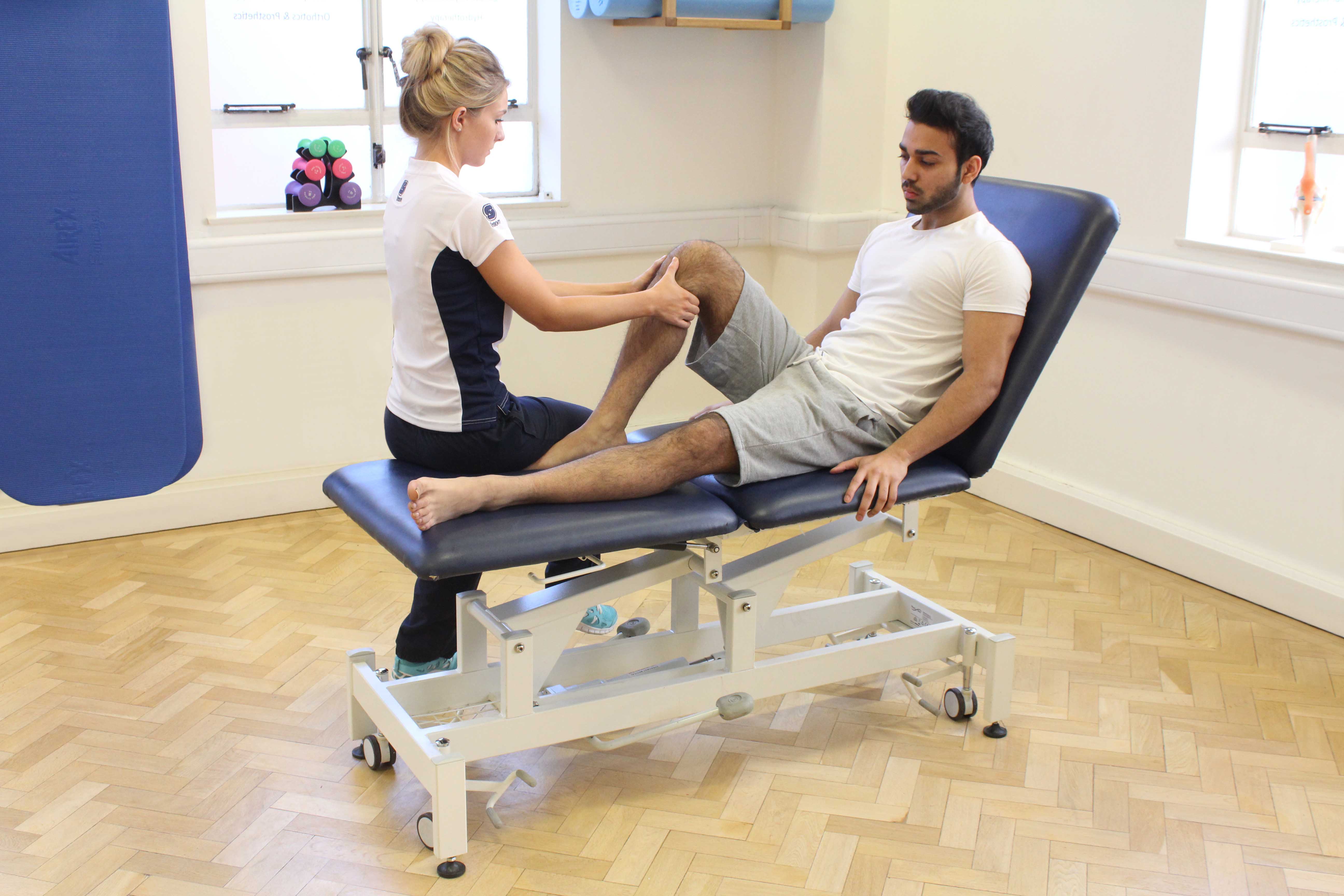nalco group
bone, muscle & joint pain physio
BOOK NOW / WHATSAPP ABOUT YOUR PAIN OR INJURY
- ORCHARD 400 Orchard Road #12-12 Singapore 238875
- TAMPINES 9 Tampines Grande #01-20 Singapore 528735
- SERANGOON 265 Serangoon Central Drive #04-269 Singapore 550265
Home > Blog > Physiotherapy > Conditions > Knee Pain > Medial Patellofemoral Ligament Injury Physiotherapy
Medial Patellofemoral Ligament Injury Physiotherapy

Our medial patellofemoral ligament (MPFL) functions to keep the kneecap centered along the front of the knee, so that it tracks well during knee movements and MPFL injuries typically occur during a forceful traumatic kneecap dislocation.
Most of the time, this painful knee injury is more common among young, active females.
Depending on the severity of an MPFL injury, treatment may involve surgical reconstruction, followed by knee physiotherapy.
Our senior physiotherapists design knee treatment programs for individuals with MPFL injuries
to help them gently restore their knee strength and function.
What is a Medial Patellofemoral Injury?
Our medial patellofemoral ligament is a broad structure located on the inside of the knee joint which connects the kneecap (patella) to the thigh bone (femur).
The primary purpose of the MPFL is to provide stability to the kneecap; by providing limit / restraint to any movement toward the outside of the knee. It also helps keep the kneecap in position, as the knee bends and straightens.
How Does a Medial Patellofemoral Ligament Injury Feel?
Common signs and symptoms that may occur with an MPFL injury include:
- Feeling the knee “giving way” or “buckling” (or unlocking and unhinging) during activity
- Feeling like the kneecap is sliding out to the side during knee movement
- Swelling of the knee following activity
- Restricted joint movement (range of motion)
- Pain when moving the joint
- Tenderness to touch along the affected joint
- Pain, joint stiffness, or "locking of the knee," after sitting with the knee bent or straight for a prolonged period of time
How Is It Diagnosed?
When you first go to see your orthopedic doctor or our senior physiotherapist, we will
- review your medical history
- ask you how and when you injured your knee
- ask you to describe your symptoms
We will perform a comprehensive physical exam of your knee, assessing different measures, such as range of motion, strength, and flexibility. We likely will manipulate your knee, placing it in certain positions to try to pinpoint which specific structures may be injured.
If an MPFL injury is suspected, we may assess the mobility of your kneecap, specifically to note if it moves more to the outside compared to your uninjured knee. Also, you may be asked to briefly perform or describe the activities that cause your pain.
Imaging techniques, such as x-rays or an MRI, may be required to gain a more thorough and objective evaluation of all of the structures of the knee joint. We may refer you to our medical network of orthopedic doctors for further investigation, if needed (or if you want us to refer).
how our senior physiotherapists can help

We will design an individualized treatment program specific to the exact nature of your condition and your goals.
Your knee pain physiotherapy treatment may include:
Range-of-Motion Exercises
Many individuals who develop MPFL laxity or injury are naturally flexible. However, when there is an injury to a joint, our bodies tend to become guarded, which may limit the joint’s range of motion.
We will assess your motion compared to expected normal motion and the motion of the uninvolved joint on the other side of your body and prescribe range-of-motion exercises to help restore natural movement to the knee.
Muscle Strengthening
Strengthening the muscles around the injured joint is an essential part of the knee physiotherapy program. As the muscles along the front and back of the thigh (the quadriceps and hamstrings) cross the knee joint, they help control the motion and forces that are applied to the bones of the knee.
When there is an injury to a joint that causes pain and swelling, muscles often become inhibited, which means they may not function at their normal capacity. Strengthening the hip and core muscles also can help balance the amount of force on the joints of the leg, particularly during walking or running.
We will assess these different muscle groups, compare the strength in each limb, and prescribe specific exercises to target your areas of weakness.
We are trained in manual (hands-on) therapy. We will gently move and manipulate your muscles and joints to improve their motion, flexibility, and strength.
These techniques can target areas that are difficult to treat on your own. For patients with MPFL injuries, manual therapy techniques can help
- restore the joint's normal motion
- support proper movement patterns during joint motion and functional movements
Our senior and experienced physiotherapists will be aware of which manual techniques are safe, and which should be avoided, particularly after a surgical reconstruction.
Modalities
We may recommend therapeutic modalities, such as
- cold therapy
- heat therapy
- ultrasound therapy
- radio-frequency Indiba physiotherapy
- joint mobilization
- stretching exercises
- balance training
- exercise therapy
- dry needling
Bracing
Compressive sleeves placed around the affected joint may help reduce pain and swelling. There are specific braces for individuals with too much kneecap motion that provide extra support through a buttress-like pad around the edge of the kneecap
In the event that surgery is required, braces may be used to control the amount of motion that is allowed as the postsurgical rehabilitation program progresses.
For example, if an MPFL injury at the knee joint is treated surgically, a brace will keep the knee straight for the first several weeks after surgery.
Activity Guidance
We will help you return to activities in a safe and structured manner, using your symptoms as a guide to protect your knee joint as it heals.
We will consider each stage of healing of the MPFL and recommend appropriate exercises to address your needs at each stage, and maximize the health of your knee joint.
If Surgery Is Required
When conservative management strategies are not successful in the treatment of MPFL injury, or in cases where there are other associated injuries, surgery may be considered. The goal of surgical intervention is to restore the integrity of the injured ligament, so that it can properly provide stability to the knee. There are many factors to consider when determining the appropriate surgical treatment, including the nature of your condition, your age, and your desired activity level. Your physical therapist will refer you to an orthopedic surgeon to discuss your surgical options.
If surgery is required to reconstruct your MPFL, you will spend several months in physical therapy after your surgery. Your physical therapist will help you progress through the stages of restoring normal range of motion, strength, and function. Rehabilitation following knee ligament surgeries is very important, as physical therapists are skilled at knowing when and how to progress patients safely after surgery. Your physical therapist will communicate closely with your surgeon to ensure that you are on track to a full recovery.
